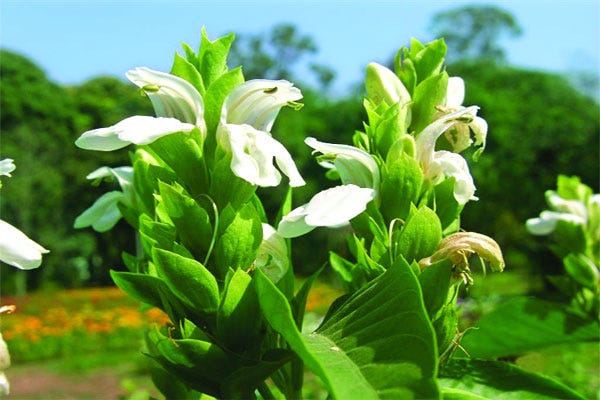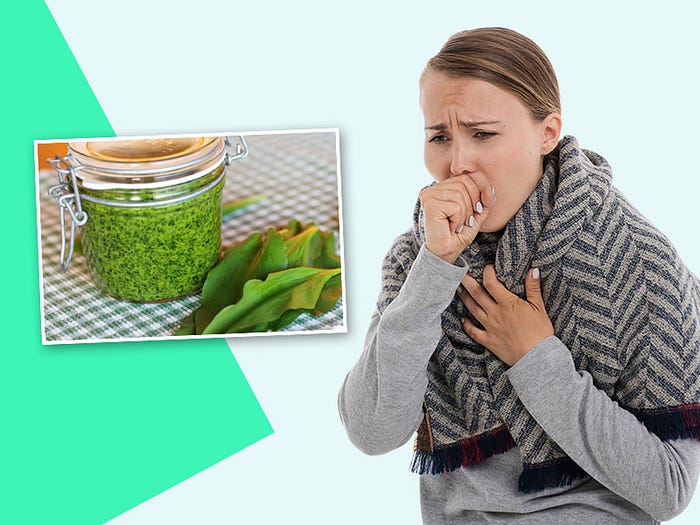
“Everything on the earth has a purpose, every disease and herb to cure it, and every person a mission. This is the Indian theory of existence.” ~ Mourning Dove
When you had a cold when you were a child, did your mother or an elder member of the household ever beat a type of leaf and feed you its juice? I had to eat a lot of this leaf juice as a child. Very bitter! Today, after so many years, I suddenly felt that bitter taste again while writing about the benefits of Basak Pata. But anyway, there are Basak Pata Benefits, and most of them are the medicinal properties of Basak Pata. But at the same time, basak leaves also have disadvantages. Let’s take a look at all the things to know and exactly how Basak Pata Uses are.
Table of Contents
- What is bask leaf?
- Medicinal Uses of Basak Pata
- Basak Pata Benefits
- Side Effects of Basak Pata
- Some Important Questions and Answers (FAQs)

What Is Basak Pata?
Before knowing the benefits of basak leaves, medicinal properties of basak leaves or uses of basak leaves, we need to know what basak leaves look like, etc.! If not, how to recognize and use Basak Pata (Basak Pata Uses). Basak Pata (Basak Pata) is a herb whose leaves, roots, flowers, and other parts are used in medicine. Basak leaves grow three to four feet in height and look like a thick bush. The flowers are clustered and the fruits look like almonds. Although the leaves are green in the seedling stage, the stems of the mature plants are light purple in color. Click here please…
Medicinal Uses of Basak Pata

Talking about the medicinal properties of basak leaves, first of all it can be said that the leaves are mostly used to make medicine. Both fresh and dried leaves are used to make medicine. Basak leaves contain a natural substance called vaccin (the virtue of basak leaves) and also some essential essential oils. Basak leaves are commonly used to relieve colds and coughs. Basak leaf juice has long been used to liquefy phlegm accumulated in the chest for a long time. The natural ingredients in bask leaves also relieve the problem of bronchitis by dissolving phlegm accumulated in the chest. Click for more info>>>
Basak Pata Benefits
Know about the benefits of Basak leaves –
- Bask leaves to reduce cough

As mentioned earlier, the use of Basak leaves to reduce colds and coughs is undeniable. If there is a long-standing cold or cough problem, in that case, if two to four basak leaves are washed very well and the juice is consumed regularly, then relief is provided. In this case it is good to know that basak leaves are very bitter. So you can mix one spoon of honey with one spoon of Basak leaf juice and eat it every morning on an empty stomach for several days. Then drink a glass of water. The cough will subside within a week.
2. Basak leaves to prevent tuberculosis

One of the medicinal properties of basak leaves is that it helps cure tuberculosis. Basak leaves contain anti-microbial properties that help reduce tuberculosis (Basak leaves properties). Basak leaves also help in treating bronchitis and whooping cough.
3. Relieves arthritis pain

Another one of the medicinal properties of basak leaves is that this leaf also helps relieve arthritis pain. It contains anti-inflammatory properties that help in treating arthritis, gout pain, joint pain, etc. Many people claim that if a few basak leaves are crushed and mixed with turmeric and lime, it reduces the pain of arthritis. To know more please click here>>>
4. Helps purify the blood

Many people have acne on their face or stomach problems or various allergy problems. These problems usually occur when the blood is not clean. Regular consumption of Basak leaves cleans the blood in our body. Not only this, it also helps in regulating blood pressure and increasing the level of hemoglobin in the blood.
5. If you have fever, eat basak leaves

Basak leaves help considerably in reducing body temperature in case of fever. Also, fever is often accompanied by cold and cough. In that case, one spoon of honey, one spoon of Tulsi leaf juice and one spoon of Basak leaf juice can be beneficial.
6. Breathing leaves
Basak leaves help cure cough, cold, bronchitis, asthma etc. Medicinal properties of Basak leaves help to widen our airways (Basak leaf properties) thereby reducing shortness of breath and providing relief to patients with bronchitis and asthma. Basak leaves are also often used to make herbal medicine. click here>>>
7. To get rid of various ‘defects’ of the body

According to Ayurveda, there are various doshas in our body that cause us various physical problems and ailments. According to Ayurveda, the health of the body depends on the balance of the three elements, Vayu, Pitta and Kapha. If the level of any of these increases, various problems arise. However, with regular consumption of Basak leaves, balance of these three substances is maintained in our body and the body remains healthy.
8. Muscle tension
Sometimes during exercise or for some other reason the muscles get tense. In that case, if the lime is turned yellow and mixed with basak leaves and massaged for some time, it will be beneficial.
9. To reduce sore throat
Sometimes sore throat can be caused due to various reasons. But then if you eat a little Basak leaf juice (Basak leaf properties) then you will get benefit.
10. Helps reduce jaundice

Half a spoonful of Basak flower juice mixed with a spoonful of honey taken daily will cure stomach problems, strengthen the liver and get rid of jaundice.
Also, Basak leaves are being used for various purposes –
If you have head lice, take a few bask leaves and apply the juice on the roots of the hair. Wash your hair after half an hour. The problem of lice will disappear within a few days.
Many people experience burning during urination. In that case, mixing basak flower bete with candy water and eating it regularly for a few days will get benefits.
Many people claim that regular consumption of Basak leaf juice cures seizures or epilepsy.
Many people have various skin diseases. Ringworm is one of them. Applying 10–12 young Basak leaves with a piece of turmeric on ringworm is beneficial.
Many people have bad body odor, they boil bask leaves in water and bathe with that water every day to get rid of bad body odor. Read more about Benefits of Harataki>>
Side Effects of Basak Pata

Like everything else, it is good to know about the benefits and side effects of basak leaves –
If Basak leaves are used more than required, there is a risk of nausea, vomiting, stomach problems etc.
Pregnant women are not allowed to eat bask leaves. Basak leaves contain some ingredients that can cause physical problems for the mother and baby during pregnancy (Basak leaves side effects).
Basak leaves help in curing honeydew disease. However, consuming more bask leaves than required can lower blood sugar levels and cause discomfort in diabetics. Read more about Miraculous properties of Sajina leaves…
Some Important Questions and Answers (FAQs)
1. Rules for eating bask leaves –
Basak leaves can be consumed in various ways and Basak leaves can be consumed to eliminate various problems. But generally, bask leaves can be consumed in two ways — beet juice or boiled in water. If you want to juice the basak leaves, first wash the leaves very well and then grind them in hamandista. As basak leaves are very bitter, use a separate hamandista, otherwise there is a risk of it becoming bitter if something else is cooked in the same hamandista.
If you want to use basak leaves boiled in water, wash the basak leaves well and boil them in water. Strain the water and drink it only when it is cold.
2. How much bask leaves can be eaten per day?
If you have a lot of cold or cough, you can grind two or three basak leaves and drink the juice every day. But it is better not to eat Basak leaves because of Veena.
3. Other than cold cough, what are the reasons to eat basak leaves?
If one has problems with menstruation, consuming Basak leaf juice will cure the problem. Many people have problems like abdominal pain, excessive bleeding during menstruation, they will benefit from regular consumption of Basak leaves. Read more about The great medicine is Ashwagandha
No comments:
Post a Comment